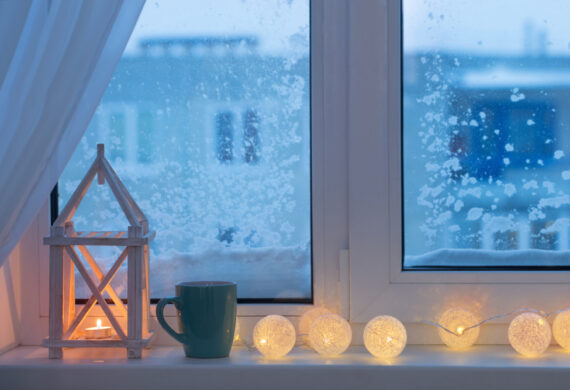New Windows This Winter?

New Windows This Winter?
With winter fast approaching, you might find the cold seeping in through your windows. So whether it’s time for a complete replacement, or just the window unit replacing, we have a few quick tricks to see if your windows are the ones inviting the cold inside.
Visible signs you need new windows
There are a number of visible signs that can mean that your windows will need replacing. Some may be that they need replacing sooner rather than later, others might need replacing to keep your home warm this winter.
- Single pane windows – While this does not necessarily mean that there is any damage to issues with the windows, it will mean that they are letting the cold in, and certainly the warmth out. Replacing these with triple glazing will show a significant difference to your heating bill.
- Cracks to the frames – cracks in the frame can be signs of age, and also damage. These cracks may either allow a draght into your home, or allow moisture in. If you have moisture in a crack, which then freezes, this can cause significant damage to your frames and windows and is best to get replaced before any freeze hits your home.
- Cracked glass – there could be any number of causes to these cracks, many unrelated to the age of your windows. These cracks can get worse in temperature extremes. If the cracks are external, and moisture enters the centre of double glazing, the next big freeze might see your internal pane developing cracks.
- Interior cold glass – where your interior glass on double glazing is cold to the touch in cooler weather, this could be a sign of damage to either your external pane or the seal around it. This will reduce its efficiency throughout the cooler months.
- Can you clearly hear external noises – while yes, it’s not a visible sign, hearing external noise clearly can either mean that you require new glazing, for example increasing to triple glazing, or that you have issues with the seal around your windows or frames.
- Windows that are painted or nailed shut – If you have painted or nailed your windows shut (or moved into a property where this was already done) it could mean that the windows no longer seal when they are shut. These should be replaced when possible. Functioning windows are important in your home, including allowing air into your home to reduce the risk of mould.
- Damage to paintwork or damp on the interior of your windows – This can mean that either windows are sealed insufficiently or that there are gaps in your frame that need urgently addressing.
Testing for draughts
There are a number of ways that you can test for draughts around your windows, everything from some powder, to a flame. The choice is yours as to which method you would prefer to use.
- Flickering Flame – The easiest way to track down a draught in your window is to move a flame around the edges of your window, slowly, to see if it flickers at any point. Care needs to be taken to ensure that you do not get the flame too close to your frame to avoid singing, burning or setting alight to anything. Also note that if you are breathing too close this can cause the flame to flicker.
- Twitching curtains – a simple one for if you are occupying the room anyway. Removing all other forms of draughts from the room, including closing doors and turning off fans, then visually observing any movement of the curtains. Note that the lighter the curtains the more movement you will observe.
- Powdered windowsill – not one of our favourites, but we understand why its recommended. If you believe the draught is at the bottom of your window, apply a light dusting of powder against the frame, when you return, any movement can indicate a draught. If you have damp, this may not work as the powder will stick or clump. However, damp can also be a sign there are gaps where there shouldn’t be.
If you have any concerns regarding your windows, or would like a no obligation quote for replacements, please contact a member of our expert team today.
